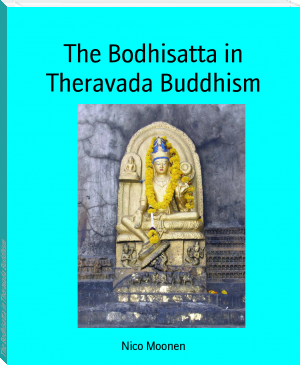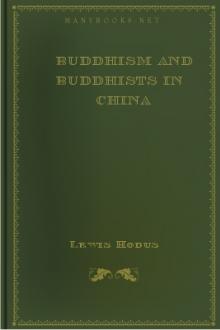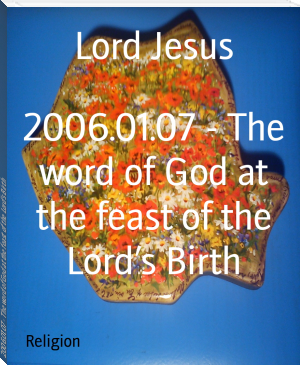The Bodhisatta in Theravada Buddhism by Nico Moonen (best books to read now .TXT) 📖

- Author: Nico Moonen
Book online «The Bodhisatta in Theravada Buddhism by Nico Moonen (best books to read now .TXT) 📖». Author Nico Moonen
The Council at Vesali lasted eight months and after it ended a new meeting was held by the Vajjiputtas and their followers. That meeting was named ‘The Great Recitation’.[12] The Tipitaka was changed in accordance with their own interpretations and new texts were added. From this there arose a separate school, the Mahāsanghikas.[13]
Some say that this meeting was at the end of the second Council. According to others this is unlikely, if not impossible, and it was held some time after that Council and some time before the period of Asoka.[14]
Theravāda was strongly represented in the western part of North India. The Mahāsanghika-school was chiefly established in the eastern part. But a clear division cannot be made. Monks of different schools lived together in harmony in the same monasteries. And wandering monks were not asked to which school they belonged.[15]
The Mahāsanghikas developed new doctrines concerning Buddha-nature, Arahantship and Bodhisattvahood. They emphasised that the Buddha was a transcendental being, far exalted above other humans or perhaps not a human being at all. They tried to give him divine qualities. The Buddha Gotama who appeared here on earth, was according to them a spiritual image (nirmanakāya) of the Buddha’s body in the Tusita heaven. They thought that the Buddha Gotama was a created Buddha. Thus they started with the transformation of the Buddha and his Teaching. This led gradually to Mahāyāna. The humanism of the original Teaching became the supernatural of most Mahāyāna texts.[16]
Further, according to the Mahāsanghikas, an Arahant was not completely holy, but he or she could fall back into a lower sphere. They claimed that the Arahant may be influenced by deities, may have erotic dreams, that an Arahant may have doubt about the Teaching, and that he or she may be still further instructed in the Dhamma. In short, they made limitations to Arahantship. According to Theravāda an Arahant cannot be influenced by deities anymore. Attaining Arahantship is definitive, he or she cannot fall back. The Arahant understands the Teaching completely and there is no need for him to learn more about it.[17]
The Theravādins rejected the new doctrines.[18] A compromise was not found and so there came two main streams in Buddhism at that time: Theravāda and Mahāsanghika.
In the first two centuries of Buddhism there arose a latent jealousy from the side of the worldly monks and the laymen with regard to the Arahants. The status of Arahant was therefore lowered by the worldly monks drawing up theses to justify this.[19]
The split between the Theravādins and the Mahāsanghikas arose not only through the difference in conception about the rules, but also, it is argued, because the first group emphasised the monastic life too much and had become an isolated group. The Theravādins thought it their fundamental duty to maintain the originality of the Vinaya as explained by the Buddha himself. The Mahāsanghikas preached to all, to the people in general, as was done by the Buddha and his holy disciples. They emphasised work among and for the laity, even if this meant abandoning the chances to reach Enlightenment themselves.[20]
About 200 years after the Parinibbāna of the Buddha there was a split within Theravāda. The monk Vātsīputra produced a new version of the Abhidhamma. He claimed to have received it (probably via several teachers) from Sariputta and Rahula. He formulated in it a special teaching about the person (pudgala). The followers of Vātsīputra were named Vātsīputriyas. Their teaching was also named Puggalavāda. They accepted the person in a certain sense as reality. They rejected the concept of an eternal soul, a permanent kernel. But they also rejected the doctrine that a living being is nothing else than the five groups with the sense-organs.[21]
About that time the Mahāsanghika-school split in two further schools: Ekavyavahārika and Gokulika (Kukkulika).[22]
An important reason why so many different schools arose is because the monks lived scattered over the whole of India. Further, Buddhism was not a “Church Community” with a central clerical authority. But every monastery or group of monasteries is a separate community. There is no supreme leader. Only the teaching of the Buddha serves as the highest authority. This also means that the teaching of the Buddha could be understood differently by monks of the second, third or higher degree. In that way there arose different interpretations. In one monastery one aspect might have been more emphasised than in another.[23]
In the third century B.C.E. Emperor Asoka accepted Buddhism. In the following years the Order of Monks got many privileges and undesirable elements entered the Order. About 237 B.C.E. Theravāda was threatened by a schism, namely by the Sarvāstivāda, the “all-exist” school. The Sarvāstivādins claimed that not only the present, but also past and future mental states (dharmas) are real. They claimed that the present does not merely last one single moment, after which it dies. But according to them all past moments remain existing; the dharmas do not arise and perish, but change from passive to active state or the reverse. They also claimed that Nibbāna is an eternal state that one enters. In Sarvastivāda there are three dharmas that are not bound to conditions: space and two kinds of liberation (nirodha). Theravāda rejected these views. Future dharmas cannot exist yet; past dharmas exist only in so far as their result is not exhausted. And Nibbāna is a mental state that sets in after the destruction of greed, hatred and ignorance. All schools that followed this last theory were called the Vibhajyavādins, the Analysts, those who make distinction (between past, present and future mental states).[24]
In 232 B.C.E., a third Council was convened at Pataliputta (Patna) by Emperor Asoka at the request of Venerable Moggalliputta Tissa who also presided over the Council.[25] During the Council the complete Canon was recited by 1000 leading monks to safeguard the Sangha against discord. At the end of this Council the Venerable Moggalliputta Tissa composed a book, the Kathavattu, in which he set out to disprove the wrong opinions and theories of a number of sects. The teaching that was approved and accepted by this Council, was known as Theravāda. It was at this time that the Abhidhamma Pitaka was probably inserted.[26]
Emperor Asoka championed the Vibhajyavādins. Therefore the Sarvāstivādins went to the Northwest, first to Mathura and later to Kashmir, which remained their centre for more than 1000 years. [27]
At about the same time there was a split in the Mahāsanghika, with the rise of the Lokottaravādins. The name means: “transcendental” school and it relates to the nature of the Buddha. They argued that the Buddha was a transcendental being, someone who surpasses the world. A normal human would not have been able to recognise the universal laws that are laid down in the Teaching. The Buddha surely would have been a superman. These theories led to the transcendental visions of Mahāyāna about the nature of the Buddha. The Mahāvastu is from this school. This book was the favourite text of the followers of Mahāyāna and it was kept in Nepal in their libraries. The text that has come to us is the result of being handed down over several centuries.[28] Here it is written that the body of the Buddha is transcendental and not of this world.[29]
Some time after this split (end of the 3rd century B.C.E.) there came two other splits in the Gokulika-school, namely the Bahushrutīya and the Prajñaptivāda. The first of these taught among other things that the Buddha had a transcendental teaching. Of the second school nothing is left.[30]
About 100 B.C.E. Vattagāmanī Abhaya came to the throne in Sri Lanka. During his reign there was a civilian rebellion. At the same time there was a Tamil-invasion. King Vattagāmanī was defeated and he fled to India where he lived in exile for fourteen years. During that time there was a famine and many laymen and monks died. The monasteries became deserted. Many persons left the country and went to India. The oral tradition of the Teaching was in danger. For example, as a result of the passing away or the departure of monks there was at that time only one monk who knew the entire Maha-Niddesa by heart. Therefore virtuous and scholarly monks learned that text, lest it would be lost. Under those circumstances it was decided to write down the Teaching. That happened about 90 B.C.E. Then the fifth Council of Arahants was held. The aim of this Council was the revision of the Commentaries to the Tipitaka. At the end of the Council for the first time in the history of Buddhism the Pāli Canon was written down and the Commentaries as well. This happened at Aluvihāra in the Matale District in Sri Lanka.[31]
At the end of the first Century B.C.E. king Vattagāmani-Abhaya presented the Abhayagiri monastery at Anuradhapura to a monk who had helped him during his exile. That monk was named Mahātissa. Because of repeated mistakes and faults he was removed from the Sangha by the monks of the Great Monastery (Mahā Vihāra). Then a group of his followers went to the Abhayagiri monastery at Anuradhapura, severed their connection with the Great Monastery and formed a separate nikāya. Later this group became divided once more. So there were at that time two groups in Sri Lanka that had separated from the Theravāda-school.[32]
At the end of the first Century of the Christian Era there was in India a further meeting during the reign of King Kanishka, this time to fix the Teaching in Sanskrit and to remove the inaccuracies and different explanations of the sects that had arisen over the years. There were so many monks that a selection had to be made. Five hundred monks under the leadership of Vasumitra composed three Commentaries. Those commentaries still exist, but they probably are not composed during that Council.[33] The Council was held at Jalandhara in Kashmir. Theravāda whose Canon had already been written down in Sri Lanka did not accept the validity of the Council held under the patronage of King Kanishka. The result was the division of the Teaching of the Buddha into a Southern and a Northern School.[34]
The name of the Northern school became Mahāyāna (the Great Vehicle). The schools, from which it had been separated, were called Hinayāna (Small Vehicle) by the Mahāyānists. It was claimed by the Mahāyānists that the path of Hinayāna to liberation was limited, but Mahāyāna was universal. The two terms Mahāyāna and Hinayāna appear between the first century B.C.E. and the first century C.E.
The new school used Sanskrit as its language and developed in the Northwest and in South India. In these regions Buddhism was exposed to non-Indian influences. There was a strong influence from the western world. Alexander the Great had invaded India in the 4th century B.C.E. This had an immense effect on life in India. Garrisons stayed behind and Greek rulers succeeded each other during the following 200 years and controlled parts of India. Thus the Greek-Bactrian king Menander (Milinda) ruled in Northwest India in the second century B.C.E. and he had a long discussion with Venerable Nagasena about the Teaching of the Buddha which has become an important part of Theravāda teaching.[35] The Greeks went from Bactria to Punjab and probably to Magadha as well. After the fall of those Greek kingdoms came the Scythes and the Pahlavas who were influenced themselves by the Hellenistic culture. They remained in control of parts of India for several centuries. Thus Buddhism came in touch with the Hellenistic world.[36]
Mahāyāna emphasised the virtue of compassion. It has been suggested that Christian influences could have contributed to the development of Mahāyāna.[37] There arose interest in the future Buddha Metteyya (Maitreya). But if Metteyya was only one of





Comments (0)